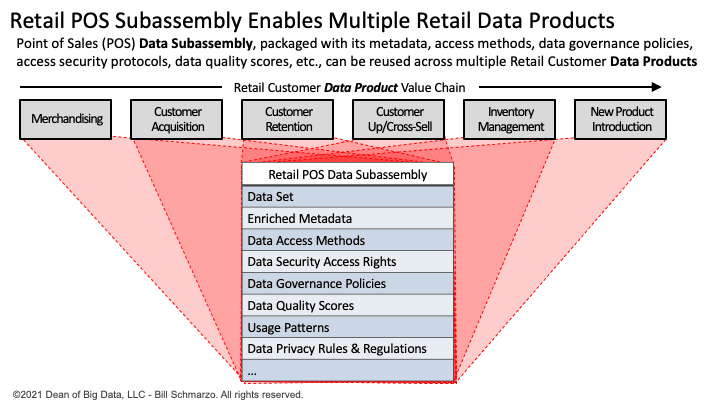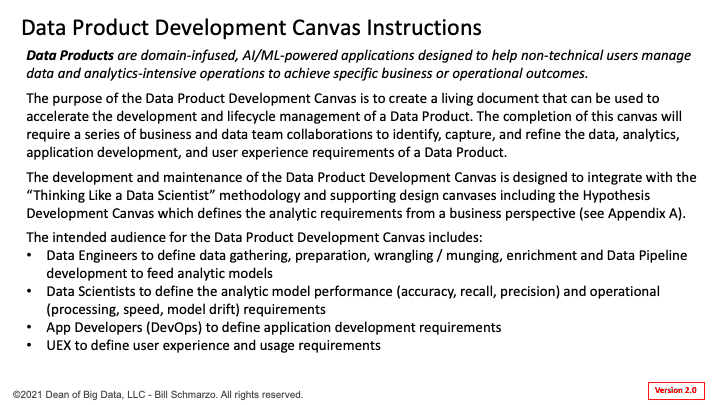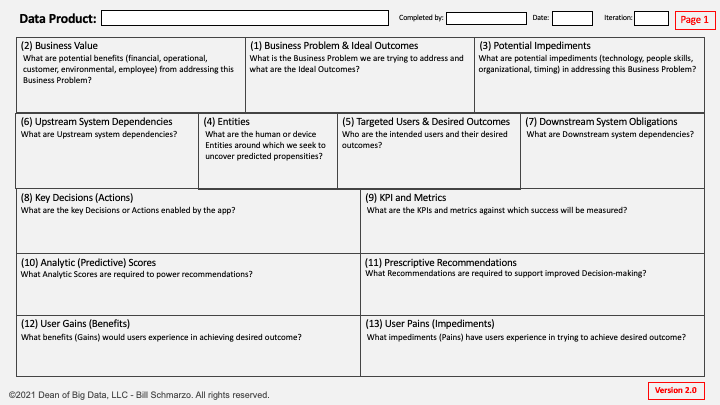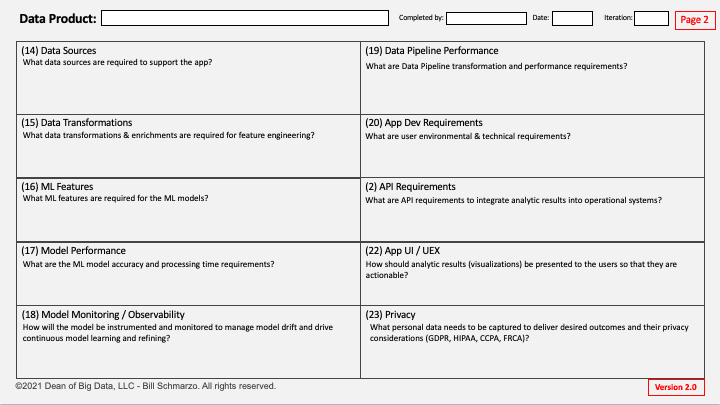
I received outstanding feedback from many folks in updating the Data Product Development canvas including Jon Cooke, Harsha Srivatsa, Craig (Doc) Savage, Melissa Perry, Raj Yakkali, Erik Burd, and Mark Stouse amongst the many. And as I like to say, “All ideas are worthy of consideration” and I did consider all your input as I created Data Product Development Canvas Version 2.0. Trust me when I say that the learning and the development of this canvas is just starting. Thanks!
In Part 1 of the “Data Subassemblies and Data Products” series, I explored two important modern data management concepts (Figure 1):
- Data Subassemblies are the packaging and pre-wiring of data and its supporting accoutrements (e.g., enriched metadata, data access methods, data governance policies and procedures, data access security protocols, data quality scores, privacy rules and regulations, usage patterns) into a single “package” with the objective to simplify data discovery, access, and exploration to optimize the effectiveness and productivity of data workers (e.g., data engineers, data scientists, business analysts).
- Data Products are the packaging of AI / ML analytics and customer, product, service, and/or operational analytic insights (predicted behavioral and performance propensities) as an application to help end users (non-data workers) achieve specific business or operational outcomes.

Figure 1: Data Subassembly versus Data Product
Part 2 of the “Data Subassemblies and Data Products” series explored the economics of Data Subassemblies and how the reuse of Data Subassemblies to support multiple Data Products can occur at near zero marginal cost making them a powerful digital economic asset (Figure 2).

Figure 2: The Economics of Data Subassemblies
In Part 3 of the series, I want to update the Data Product Development Canvas. I introduced the Data Product Development Canvas as a design tool to help business and data teams collaborate in driving alignment in capturing Data Product development requirements.
Data Product Development Canvas is an easy-to-comprehend tool for facilitating business and data team collaboration in triaging the targeted business problem and identifying the data, analytic, application development, and user experience requirements for the development of a Data Product to achieve a specific business or operational outcome.
While the original Data Product Development canvas was a start, it was not complete. Jon Cooke shared a very useful anatomy of a Data Product in Figure 3 that I used to help frame version 2.0 of the Data Product Development Canvas.

Figure 3: Anatomy of a Data Product by Jon Cooke
Here is the Data Product Development Canvas Version 2.0.
Data Product Development Canvas Version 2.0
First, I included some operating instructions instead of just dropping the canvas on folks and hoping they can sort it out (Figure 4).

Figure 4: Data Product Development Canvas Instructions
Next, because there is so much to cover in the development of a Data Product, the canvas had to be split into two templates. Here is page 1 (Figure 5).

Figure 5: Data Product Development Canvas v2 – Page 1
Page 1 didn’t change much from the original Data Product Development Canvas v1. I cleaned up the flow of the panels a bit, clarified some panel titles, and added more instructions to the canvas. The biggest additions came in Page 2 of the canvas (Figure 6).

Figure 6: Data Product Development Canvas v2 – Page 2
I believe that every panel on Page 2 came from the feedback I got from others. That includes:
- More data engineering and data science requirements (Data Sources, Data Transformations, ML Features, Model Operational Performance, and Model Monitoring / Observability requirements)
- New Application Development (AppDev) requirements (Data Pipeline, Application Development, and API’s requirements)
- New User Experience requirements (UI / UEX and Privacy requirements)
In the near future, I’ll release a blog that details the operating instructions for the Data Product Development Canvas 2.0, including a Glossary.
Data Product Development Canvas Summary
Data Subassemblies and Data Products as packaged, sharable, reusable, continuously refinable assets, enable organizations to become more effective at scaling the economics of data and analytics across the organization. Both are powerful “products” in transforming Data Management into a Business Discipline.
And the next step in the transformation is to provide some design canvases to guide the specification, development, and on-going enhancement of these powerful data management products. Thusly, the Data Product Development Canvas.
If you are interested in the PowerPoint versions of this canvas, please DM me. I’ll be happy to share what I have developed so far. But sharing comes with a caveat, that as you use the canvas, you will share your observations and learnings with the data management community. That way, we all grow together!
